
I had a very interesting and productive trip to the River S Unit of the Ridgefield NWR last Friday. Even with overcast and threatening skies (which often made taking photos of silhouetted birds problematic) it never did rain. And, despite seeing and photographing Black Phoebes, and watching and photographing the delightful spectacle of Cliff Swallows gathering mud for their nests, either of which would’ve been the highlight of almost every other birding trip, the true zenith of that day was finding some cooperative Black-headed Grosbeaks and taking waaay too many photographs of them. This was particularly satisfying in large part because I had broken my own unwritten rule about expectations (which are routinely the death of joy, not the least reason being that, oh so very often, they come to naught), and had made it my mission on this day to successfully photograph a Black-headed Grosbeak.
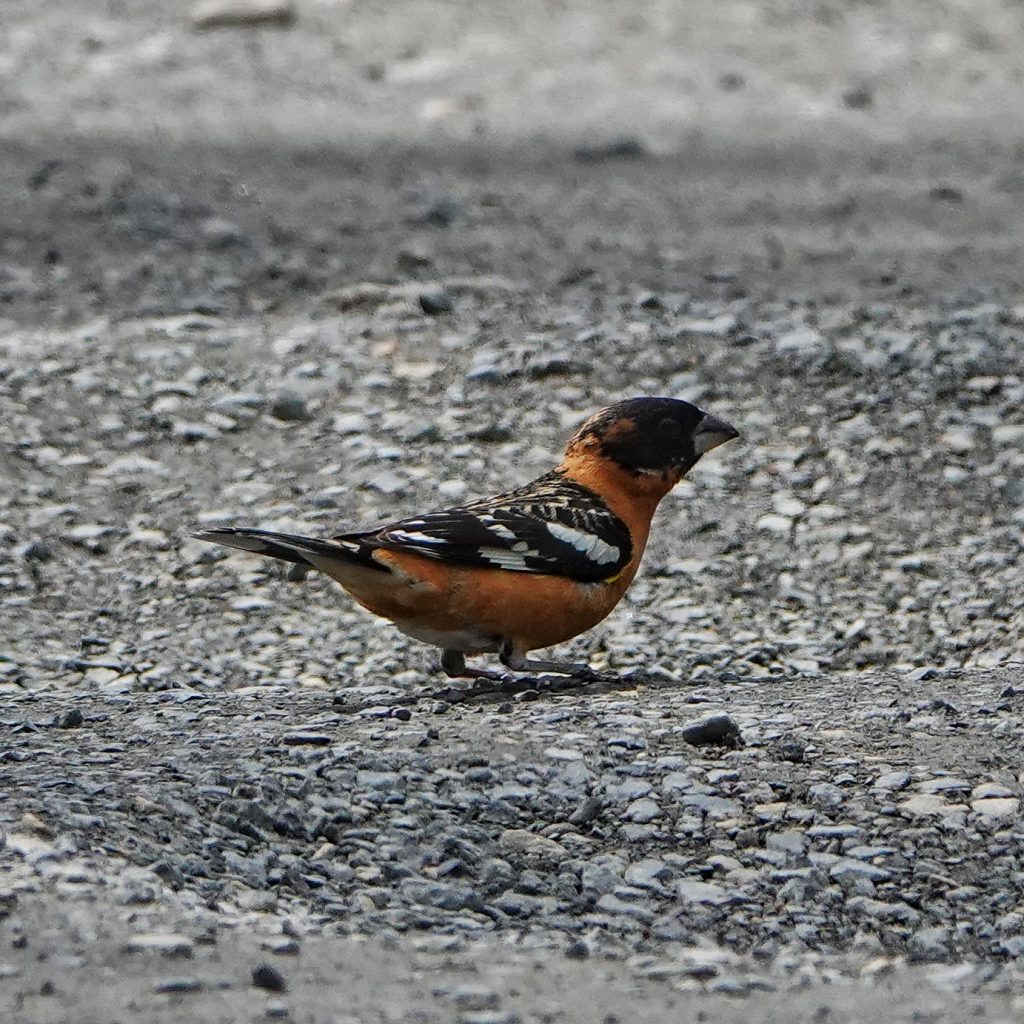
I had seen many of these birds before, and in the days when I birded exclusively with binoculars I got clean and extensive views of them. But once I started carrying a camera all of the birds I found were either too quick, too far away, silhouetted against a glary sky, or mostly hidden by foliage. I’d hear them, since their loud, robins-on-meth song is one of the very few I can recognize, but producing an identifiable photo of one had been beyond my capabilities.
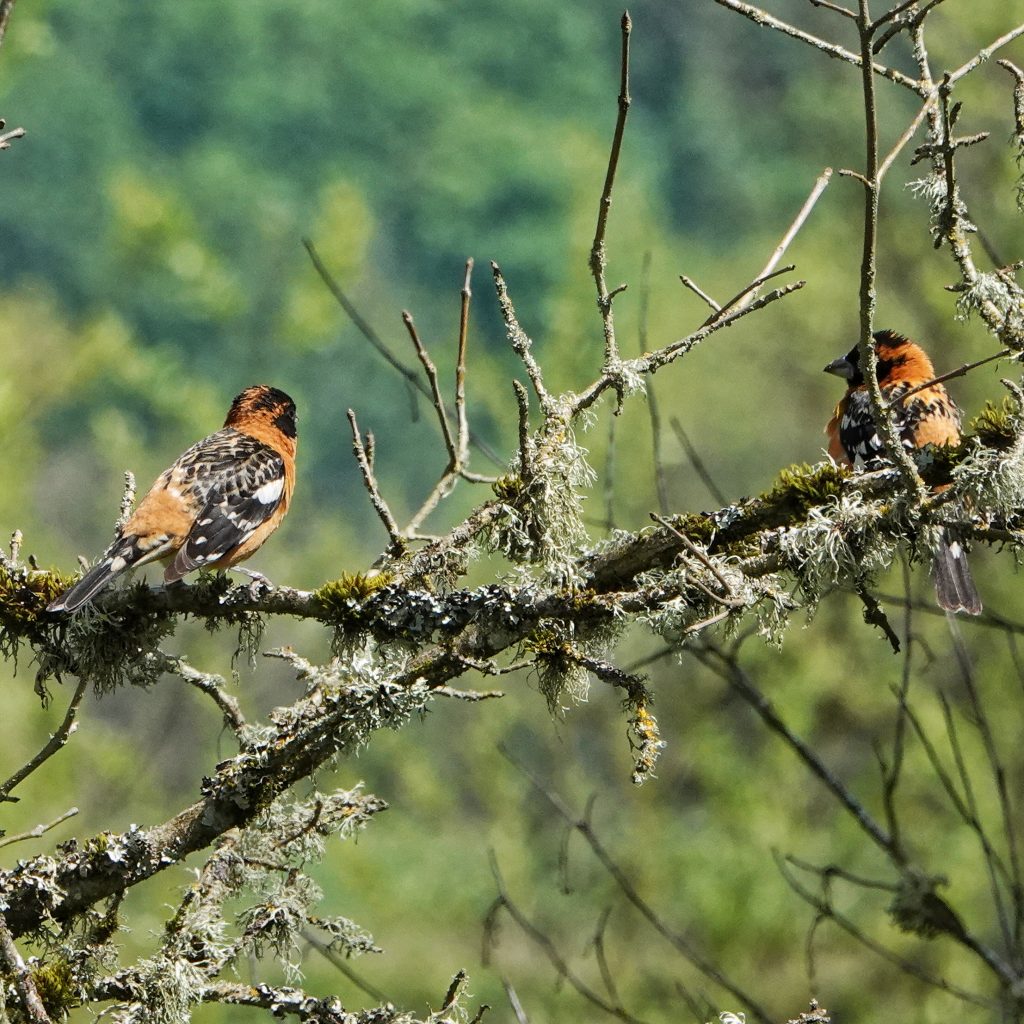
And then, whilst walking the road near the Kiwa Trail (which I had been disappointed to discover was closed, although I was greatly mollified when I learned that the closure was due to actual nesting Sandhill Cranes, the second year in a row this unusual event has occurred), mirabile dictu, a Black-headed Grosbeak flew onto an exposed perch in a tree less than 50’ from me. I started snapping like a madman, only to have it fly out of the frame. But it landed in the road just slightly further away, where it scratched and picked until a car spooked it away. I’d have been very happy with just those photos (since I more or less managed to stay out of the way of my Sony’s ability to take great photographs), but about 20 minutes later first one, then another, flew onto a limb in good light, and stayed long enough for me to click another couple dozen photos. And I was a very happy, and satisfied, man.
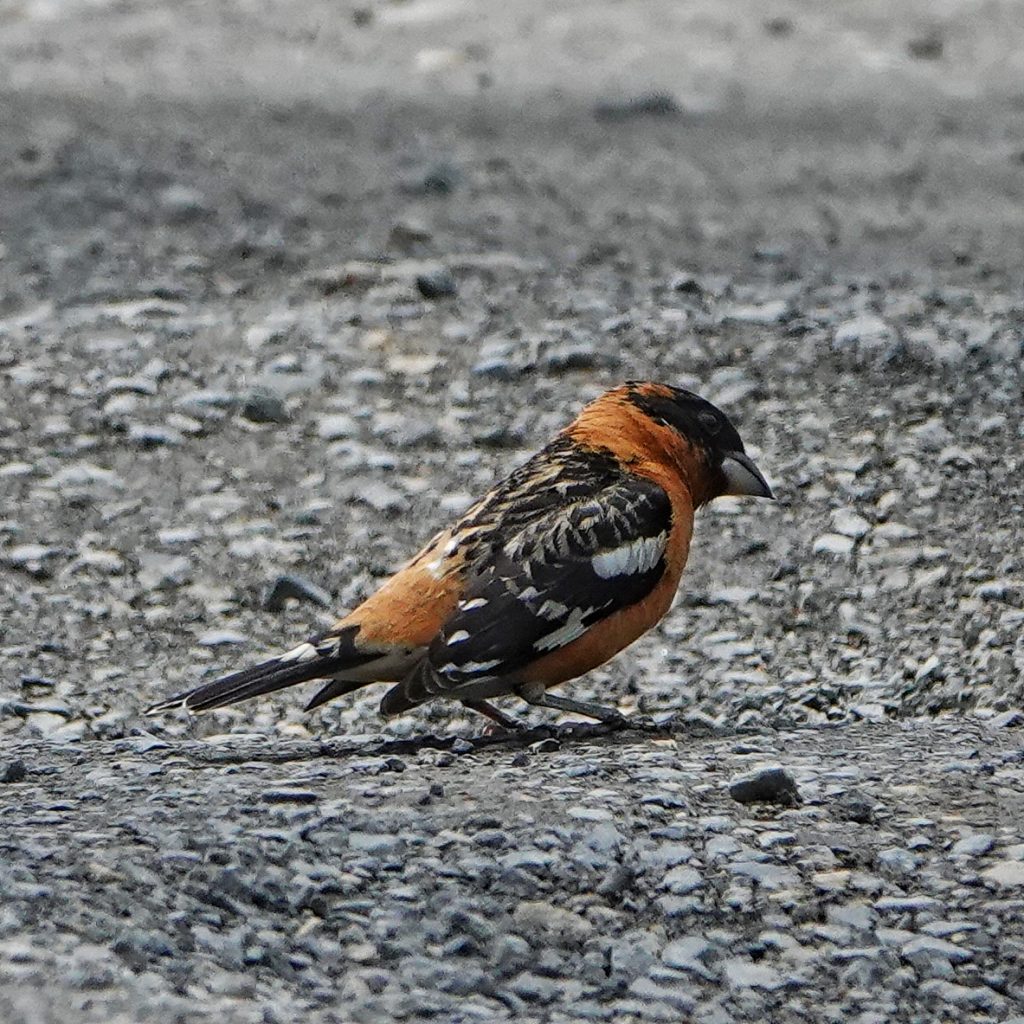
Once again challenging our beliefs about discrete species and what constitutes one, fertile hybrids of Black-headed and Rose-breasted Grosbeaks are not at all uncommon where their ranges overlap around the 98th parallel in the Great Plains, and male Rose-breasted Grosbeaks have been observed reacting aggressively and territorially to recorded calls of male Black-headed Grosbeaks. Hybridization is less common in extensive habitats with large numbers of both taxa, and higher in patchy habitat with lower population densities.
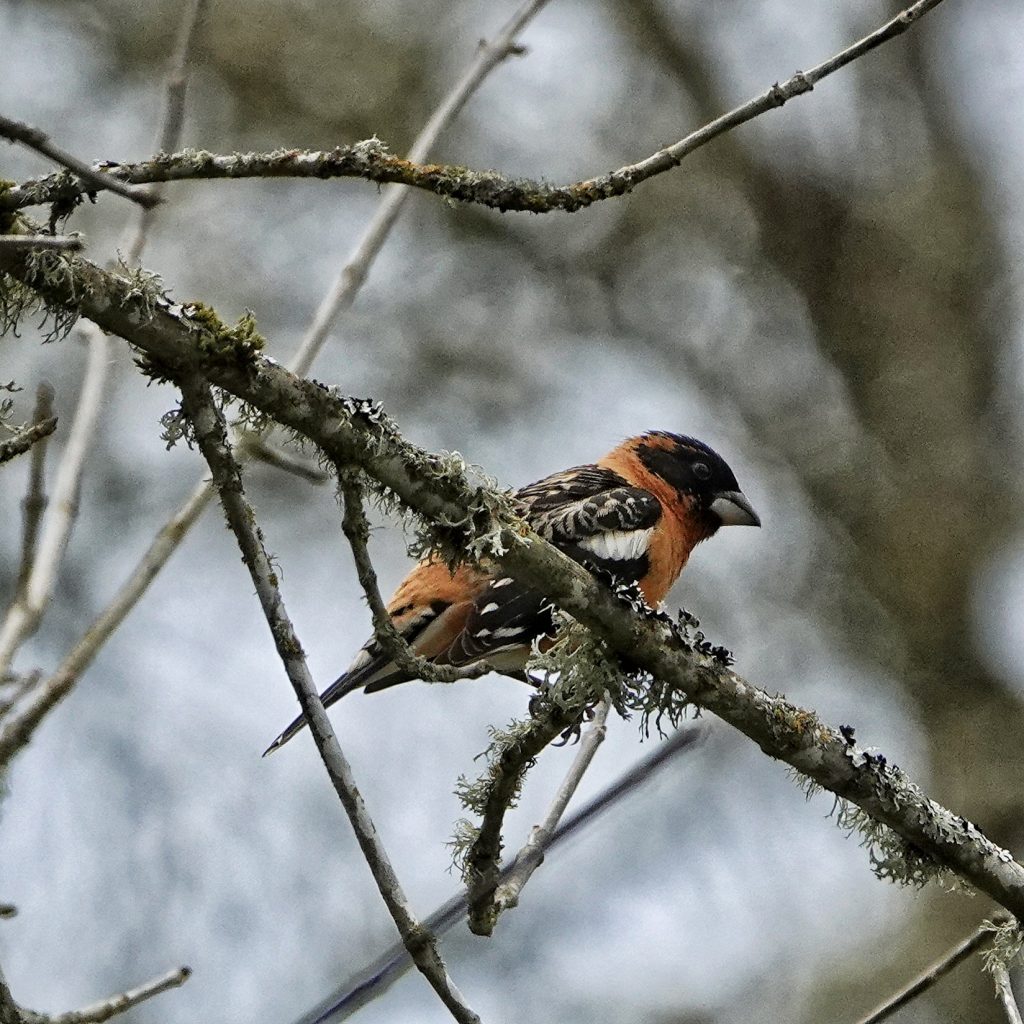
Black-headed Grosbeaks are one of the few birds that eat Monarch Butterflies, because they are one of the few that can tolerate the toxic cardenolides that the Monarchs store as caterpillars by eating milkweed. There are other plants that contain cardenolides, such as foxglove, laurel, oleander, and rhododendrons, and insect larvae and adults that eat them are often protected by those toxins and advertise that fact with aposematic (warning) coloring.
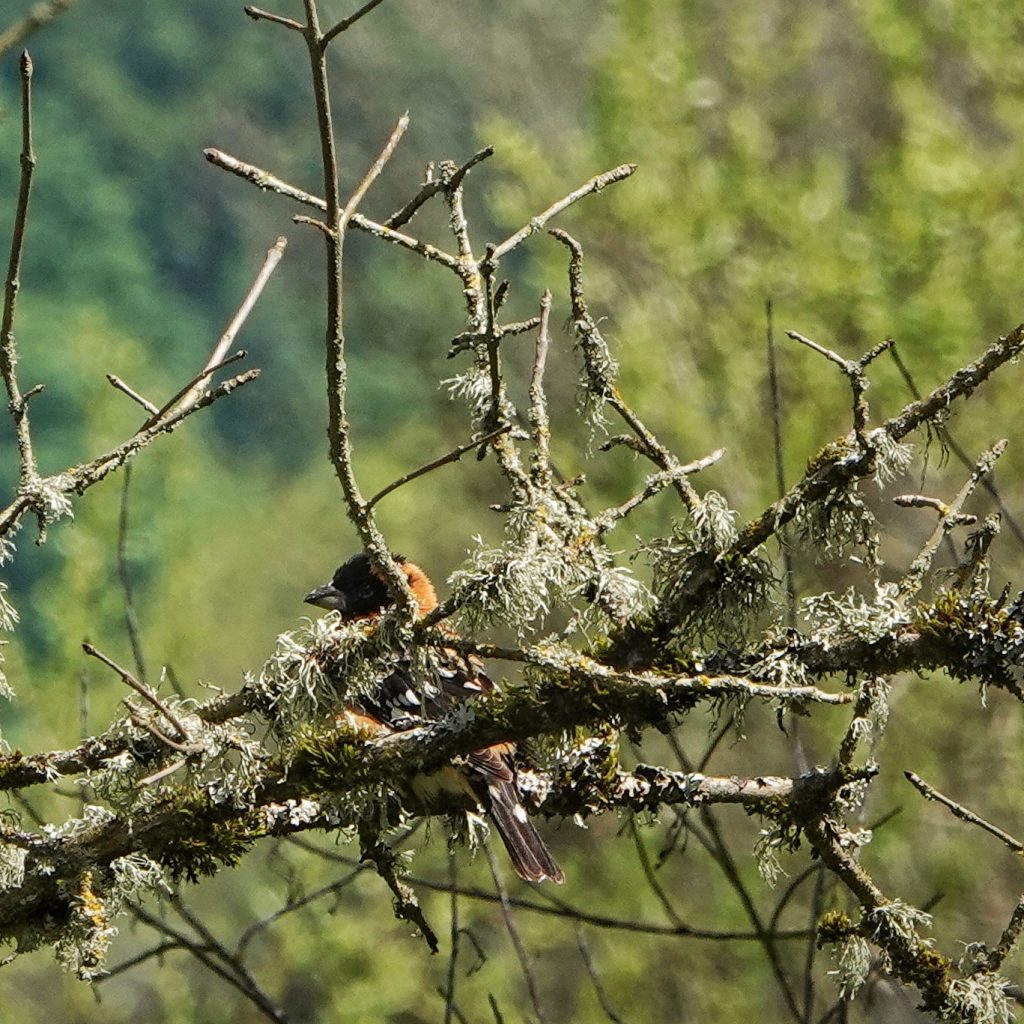
Though I can’t seem to confirm this idea, it seems that bugs like Labidomera clivicollis and Chrysocus sp. leaf beetles, the true bugs Oncopeltus fasciatus and Lygaeus kalmii, and the leaf mining fly Liriomyza asclepiadis, all of which feed on milkweed and contain cardenolides, as well as those feeding on other cardenolide rich hosts, such as the true bug Largus cinctus, might be on the menu for the Black-headed Grosbeak, and provide an unexploited prey niche to provide extra protein during the breeding season.

Description– Medium sized (7-8” long), yellow to orange and brown to black bird with a thick bluegrey bill; males in breeding plumage have a black head with an orange slit, orange breast and neck, mottled brown back, black tail, and black wings with white wingbars; females and non-breeding males have whitish crown and eyeline, buffy breast, and brownish grey wings, tail, and back; males don’t get full breeding plumage until their second year; both males and females sing, though the song of the female is simpler.
Similar species-Evening Grosbeaks (which are actually in the finch family, whereas Black-headed Grosbeaks are classified with the cardinals) have larger, thicker, yellowish bill, and the males have a yellow forehead/eyebrow; male Bullock’s Oriole has black crown, black eyeline, black back.
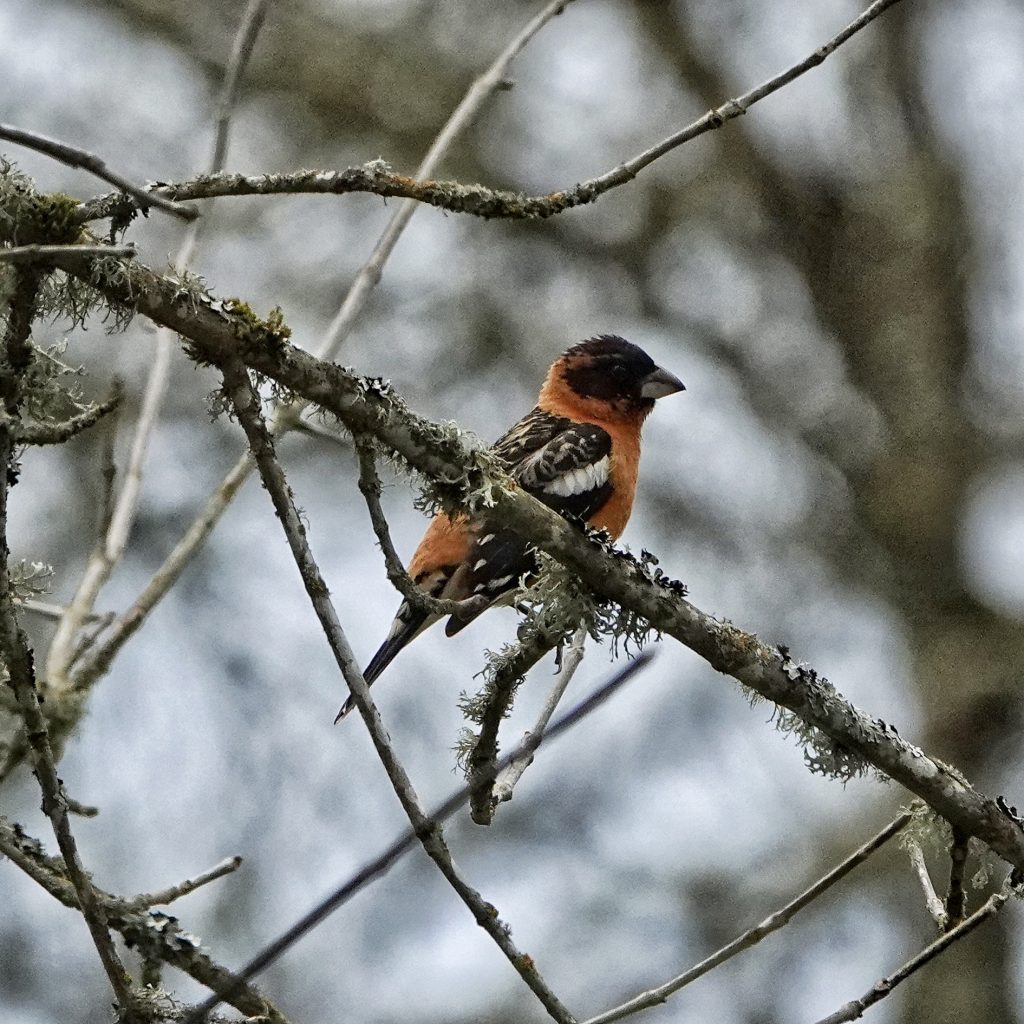
Habitat– During breeding and overwintering they are found in deciduous and mixed forests and woodlands with abundant underbrush, at up to 7,000’ elevation; can be found anywhere during migration.
Range-Winters from central Mexico into Central America; Breeds and migrates in western North America from northern Mexico to southern Canada; can be found region wide in appropriate habitat during breeding, and region wide during migration.
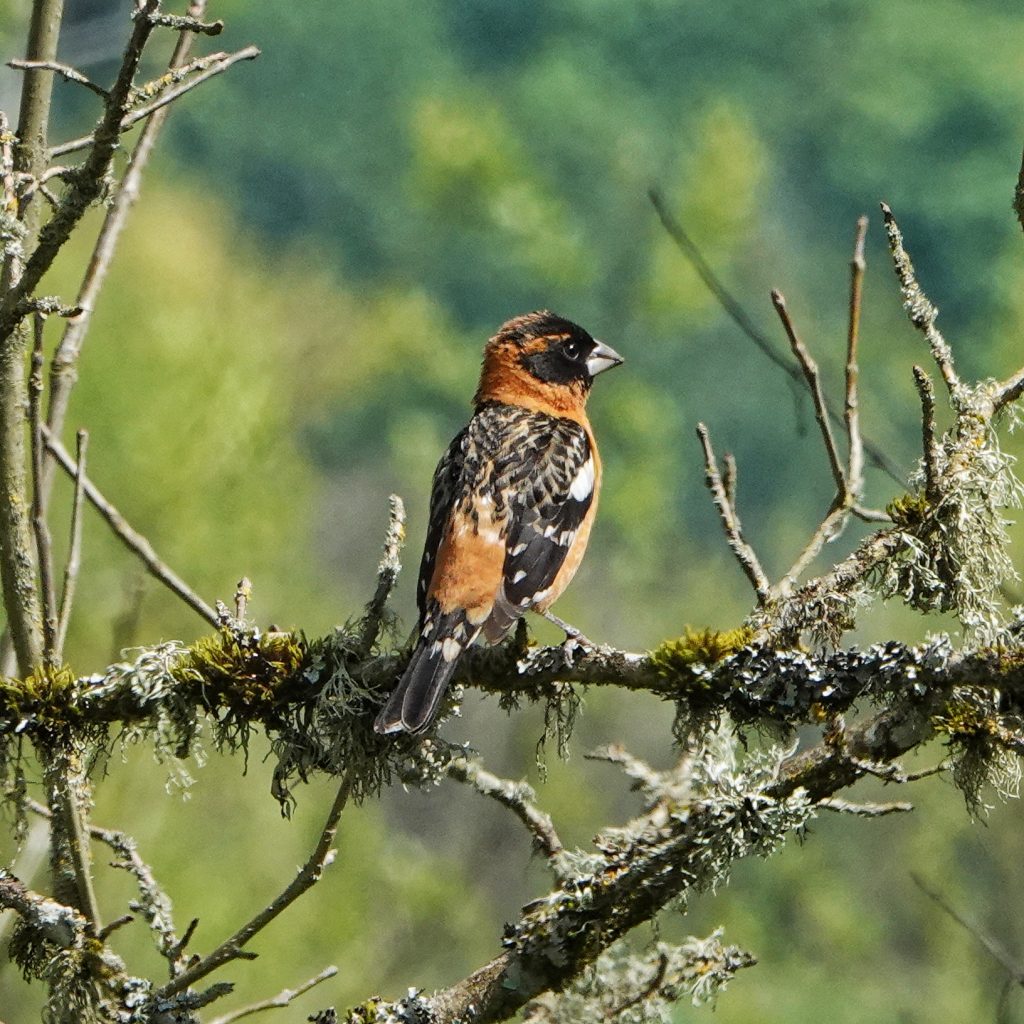
Eats-Seeds, nuts, fruit, insects, spiders, and other invertebrates.
Eaten by-Young are vulnerable to any predators that can find them; adults preyed on mostly by bird hunting birds, and domestic and feral cats.
Adults active-Migrates through our region from mid April to June, and early August to September; breeding pairs found from May to mid August
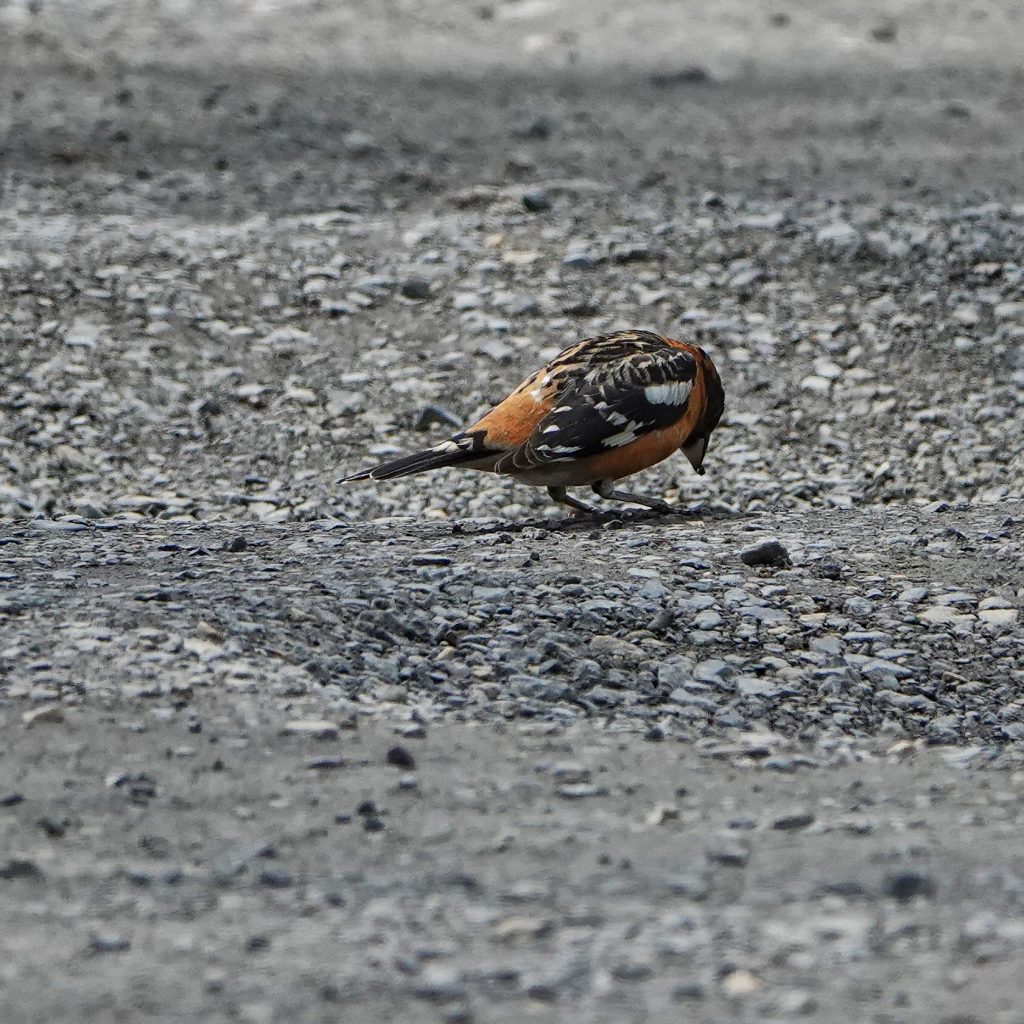
Life cycle-Both males and females incubate eggs, bring food to the young, and defend the nesting territory, but only the females build the nest; nests constructed in the forks of tree 4-25’ above the ground, and consist of twigs, plant stems, flower heads, and rootlets; lays 2-5 bluish green eggs, with purple to brown marks, which hatch in 12-13 days; chicks fledge in 11-12 days; probably has only a single brood per year; may live almost a dozen years
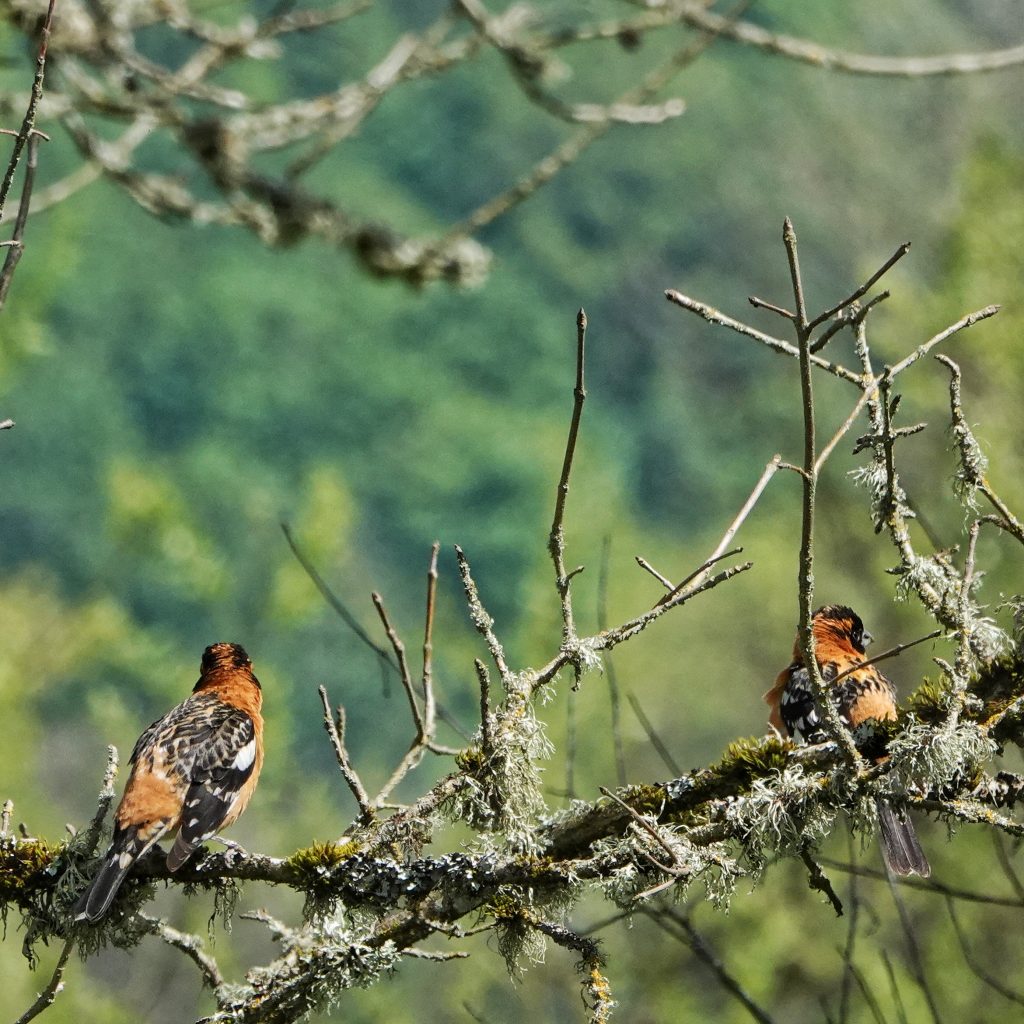
Etymology of names–Pheucticus is either from the Greek word for ‘shy’, or their word for ‘painted with cosmetics’, and either would be applicable, although they aren’t so much shy as usually hidden by foliage. The specific epithet melanocephalus is from the words for ‘black headed’, and is equally apropos, at least for mature males.
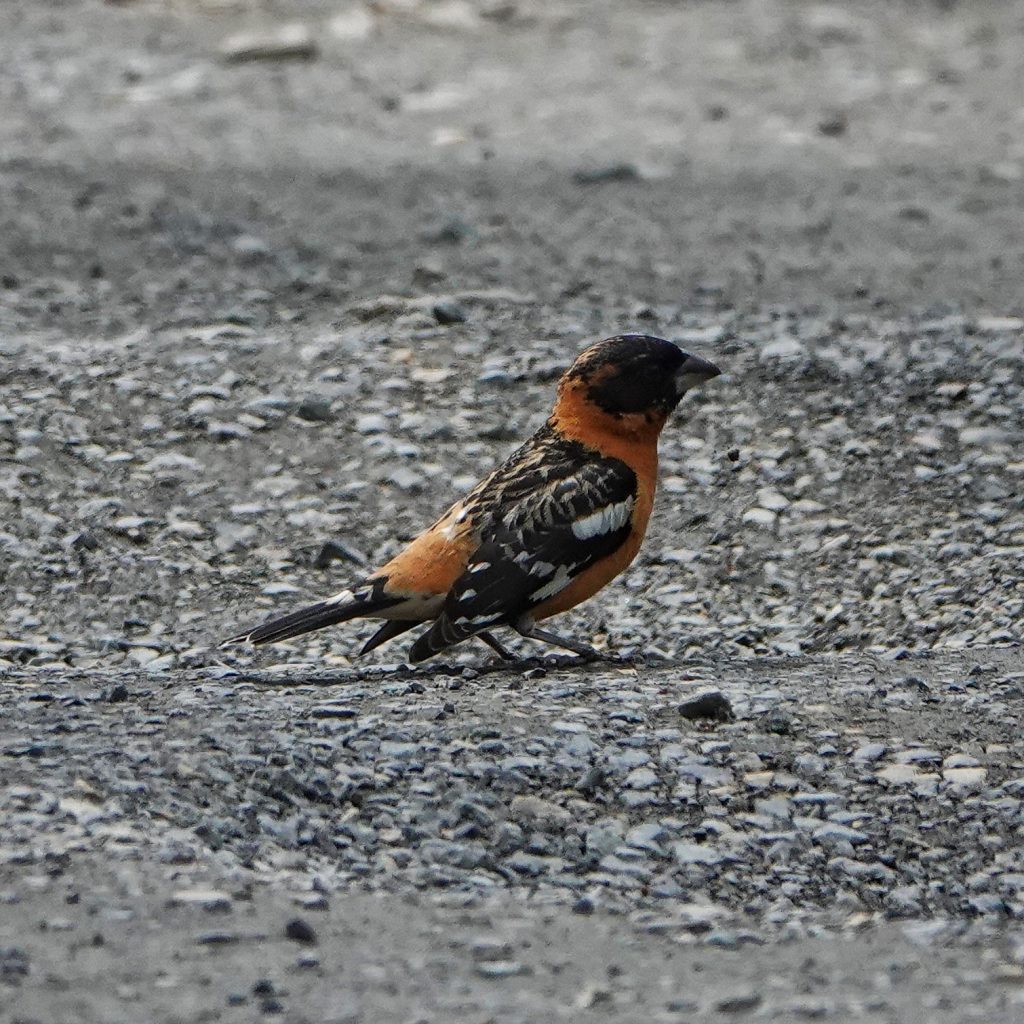
https://www.allaboutbirds.org/guide/Black-headed_Grosbeak/overview
https://www.audubon.org/field-guide/bird/black-headed-grosbeak
https://animaldiversity.org/accounts/Pheucticus_melanocephalus/
https://sdplantatlas.org/birdatlas/pdf/Black-headed%20Grosbeak.pdf
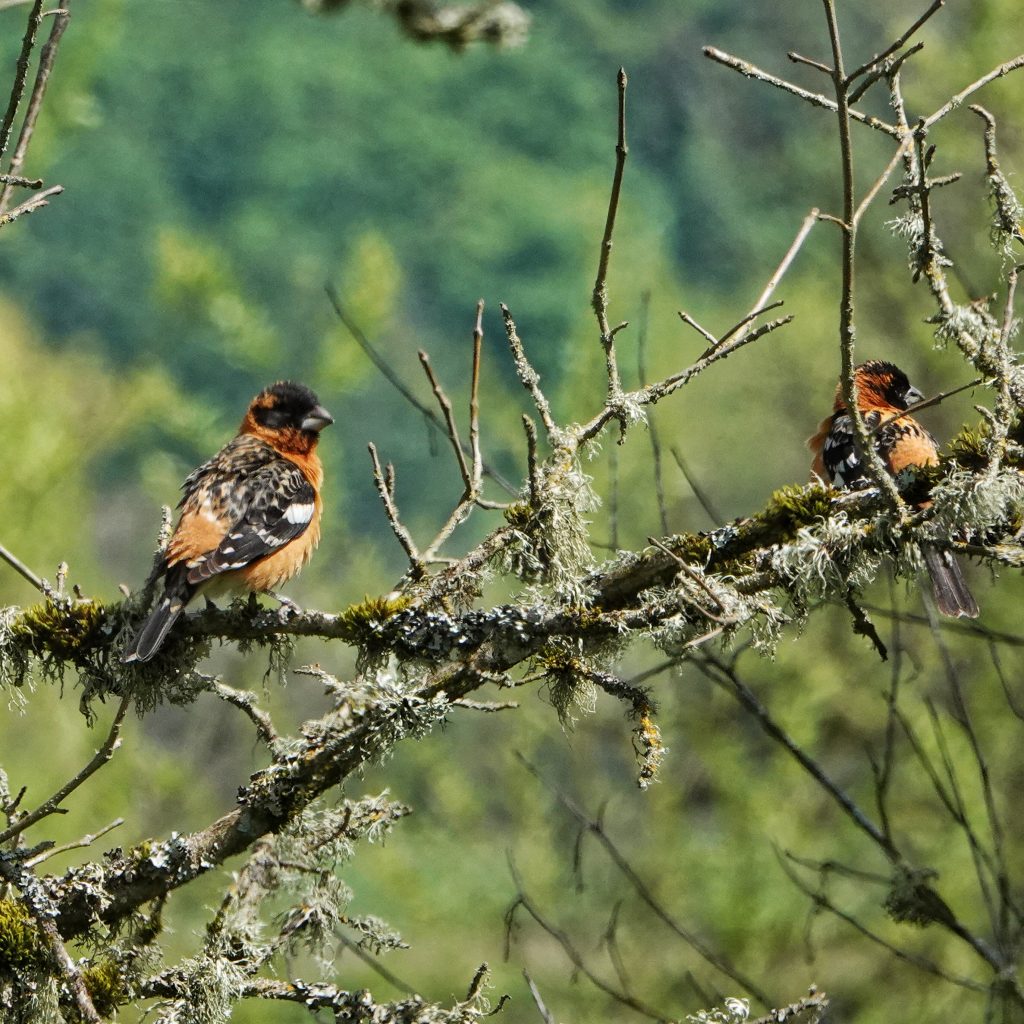
I hear these often, most recently at Marymoor and at my folks near Black Diamond, but I can’t seem to get a good photo of one. Thanks for the photos and all the great info!
Thanks for your appreciation, Bonnie!